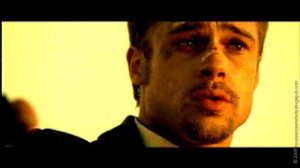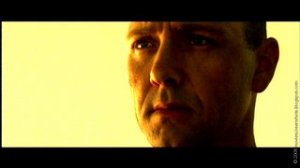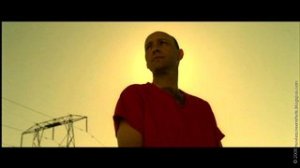Textual analysis of ‘Se7en’

Directed by: David Fincher
Written by: Andrew Kevin Walker
Starring: Morgan Freeman, Brad Pitt & Kevin Spacey
Release date: 5th January 1996
Plot summary: sadistic mass-murderer John Doe (Kevin Spacey) draws out plans for making an example of the human race by killing seven people..each one representing one of the deadly sins of which they are most guilty of….Gluttony, Greed, Sloth, Lust, Pride, Envy and Wrath. Two American detectives, Somerset (Morgan Freeman) who is soon to retire, and Mills (Brad Pitt) his soon to be replacement, must track down this killer and stop him before it is too late. But the men soon realise that their own lives play a big part in Doe’s plans and what he has in store for them changes their lives forever….
I analysed the opening of the film..
Sound-
At first there is no background music at all, which grips the audience, a frequent connotation of a thriller as it is building tension as for what is to come. There is also a lot of heightened sounds, which is typical of a thriller also. Through use of dialogue we find out a lot of background information on our central protagonists, Somerset and Mills, setting the scene. For example, we learn that Mills will be with Somerset for the ‘next seven days’ and that Somerset will be retiring after this. We also see a bit more into Somerset’s personality, as we learn he is always ‘asking questions, “Did the kid see it?” ‘ which shows he is a caring and sensitive character. We also see that although Mills is young, he is obviously quite experienced, as he has been a ‘homicide detective for five years’ although he doesn’t quite seem as experienced as Somerset does. A very heightened ‘ticking noise’ is used to build tension in the viewers, leading them to expect something to happen, like a time bomb waiting to go off. The first piece of background music is set off when the title sequence begins. It is a sinister and tension building type of music, and it grows louder and quickens as the title sequence ends, adding even more tension and a sense that something bad is going to happen. The background music ends with a dramatic ‘boom’ noise, and we are met instantly with sirens, so we know that the villain has probably committed a crime for our heroes to find.
Camera techniques-
In this opening sequence a lot of over the shoulder shots are used, such as when Somerset looks into the mirror, helping us empathise with the character, as we see what he sees. We also have a lot of close ups and extreme close ups when dealing with the character of Somerset, telling us he is very likely to be the central protagonist and possibly hero of the film. For example, we see a point of view/ extreme close up as Somerset picks up his belongings and puts them in his pockets. We know these are significant to him as he clearly keeps them on him at all times, and by using these camera shots we therefore understand the character’s actions more. Tracking shots are used frequently in the opening scenes, mainly tracking Somerset and also Mills, after he is introduced that is. This shows these characters will play important and vital roles in the film as all of our attention is focused clearly onto them without any interruptions from more minor characters. There is a basic shot reverse shot when Mills first meets Somerset, which is a simple technique but shows they are having a conversation with one another and also their reactions to what they say. Lastly, a slow zoom into Somerset as he falls asleep helps draw the audience in, leading them to expect that his blissful sleep will soon be disturbed (much like the equilibrium) which is what thriller’s usually aim to do. (Keep the audiences on the edge of their seats). A somewhat elegant and well thought out montage is then displayed to us, containing shots of various things that help keep the audience guessing what is to come later on in the narrative. For example, we see a lot of shots of people in black and white photos, being tortured and tormented. This links to the sinister aspect of the film, which is expected from a thriller. We also see shot after shot of a pair of hands, which we assume must belong to the villain of the film. The shot is an extreme close up so that the villain’s identity is still unknown, and it allows the audience to see a little information without giving too much away.
Mise en Scene-
Firstly, it clear to the audience that the story is set in some part of America, as all of the people in the opening scenes have American accents.The costumes and hairstyles alone give out many signals about what the characters will be like personality wise in the film and what roles they’ll play. For example, Somerset is first seen wearing a white shirt, which suggests he is a pure and good character, as white clothing is usually associated with this. It also suggests he will be our hero. The suit he is wearing suggests he has an important role or job in society’s views, which turns out to be true, as he is an experienced detective. Mills too wears a white shirt, suggesting to us he will also be a hero in the story we are about to see. Although despite this, Mills looks much younger than Somerset, with a younger complexion and more modern hairstyle, leading us to think he will be quite vulnerable, and will perhaps be changed by the disruption of the equilibrium or the villain himself by th end of the film. Also, Mills wears a leather jacket, implying he may be a bit more rebellious or adventurous than Somerset is, which might lead him into trouble. Props used include the dead body, evidence that we are watching a possible crime/ mystery thriller, as we expect our Detective main characters will find out who killed the person. We also see a lot of blood, linking to death and also to the genres of crimes, thrillers and mysteries. Colour is clearly important to the opening scenes, as we see red frequently as the titles roll. This foretells death in the narrative and leads the audience to expect there will be a fair share of it later on. We also have a a lot of uses of black and white throughout the sequence, with black being used to black out the eyes and face of a person in a photo, suggesting the film will be graphic, sinister and blunt. (like Schindler’s list, which was in black and white and the only piece of colour evident was a girl’s red coat, who is killed) Lastly, in the montage, we see the villain cut out the word ‘God’, leaving us pondering whether this film will have a religious aspect to it.
Lighting-
Overall, not a lot of lighting is used in the opening scenes of the film. The most lighting is used when we go into Somerset’s house, backing up previous assumptions that he will be the film’s hero. This is because light has connotations of goodwill and bravery, and Somerset’s character is surrounded by it when he is first introduced to us. The lighting is harsh and barely used at all in other scenes. For example, when Somerset is walking down the street with Mills, there is clear use of pathetic fallacy. The lighting outside is not only dark but it is pouring down with rain, equally foretelling something will be disrupting their somewhat normal and happy lives soon. Also, when Somerset goes to leave his apartment and turns out the light, this not only helps end the scene smoothly, but also to show that he is going somewhere which is dark and scary (crime scene). In the montage lighting is also used with the use of shadows made by a character, which lead us to assume that this will be the villain of the story, as shadows are things that foretell badness and evil.
Editing-
Overall the opening scenes are very fast paced, as we go through three settings/locations in a mere few minutes (Somerset’s home, the crime scenes, the street outside the crime scene.). This leads us to predict the film will be generally fast paced, like many thriller’s are, keeping us on the edge of our seat constantly. The cuts to and from each scene are very blunt and quick, like when Somerset flicks off the lamp, we instantly jump to a crime scene, maybe resulting in the audience being rather shocked or questionable as we may not have been expecting this judged on the previous scene.
Titles-
The titles in the sequence give a lot of clues into what the audience can expect from the film. They are white on a black background, and although this may seem like a simple choice with no or little relevance, we can say a few things about this. The main being that white writing on black backgrounds is very bold and eye catching, which hints that maybe the villain in this film is seeking attention from the hero’s or us even, suggesting his motives for the crimes he is about to commit. The titles are also very ‘jittery’, as they move around quiet a lot when they appear on screen, sometimes even enlarging or decreasing in size too. This suggests the person behind this writing (likely to be the villain) is insane or a hard villain to catch, as it doesn’t seem to keep still for very long. The font itself is very ‘scrawl-like’ suggesting that this has been written by a man, and that he has overwhelming emotions of anger or frustration, perhaps linking to the villain’s motives and overall personality.
Questions raised-
What is going to happen to Mills and Somerset? What relationship will the two characters have? What/who will they encounter? Will Somerset retire? Will Mills prove to be a suitable replacement, or will he be put aside? Who is the villain? What murders will he commit? What will be his motives? Is he religious? (cutting out ‘God’ from magazine) Why is the villain’s fingers bandaged up? How did he hurt them? Was it intentional? If Somerset and Mills are confronted by the villain, will they be victorious? Will they stop the villain? Will the equlibrium be restored?
What I thought personally of the plot/narrative of the film and the film as a whole…
(Stills from the climax of the film- where Mills is broken by the news of what is in the package Doe has sent him, and how it represents the sin of envy)
After watching the film I decided that it was a magnificent example of a thriller at it’s best. It never fails to keep the audience guessing, and keep them on the edge of their seats too, shocking and thrilling them at every twist and turn of the plot. I like the idea that the villain John Doe is completely in control. He is in control of the characters, their actions, and of the audience too. He controls what we see in a way, as everything that plays out to us is a part of his plan to show mankind they are all deep with sin. I also loved the idea that the equilibrium is never really or truly restored, and the villain actually get’s what he wants in the end. This makes the movie different from all others as we don’t see the typical ‘happy ending’ that is evident in most other films, where the villain’s plans are usually destroyed and the equilibrium is restored. This makes se7en so gripping and moving, as nothing goes back to normal after John Doe wins and his plans succeed in making seven people examples of each deadly sin. The ending, although quite shocking and conclusive, leaves the viewer quite moved, as we feel that perhaps the villain was right about people being riddled with sin and the hero’s come to realise this too.
I could only find the title sequence included in the film, which I too analysed, but couldn’t find the opening to the film itself. I like this title sequence and it may influence me when Natalie and I are deciding what to use for our title sequence, as I love the montage of different shots which link to things said in the film later on, like Doe chopping off the skin on his fingers to prevent the police finding his fingerprints and his obsessive record keeping. I also love the use of colour (red, white and black in particular) and the titles used in general, as their font and movement all add to the atmosphere. The music is good too, as together all the aspects of the sequence fit the overall tone, mood and genre of the film perfectly.




